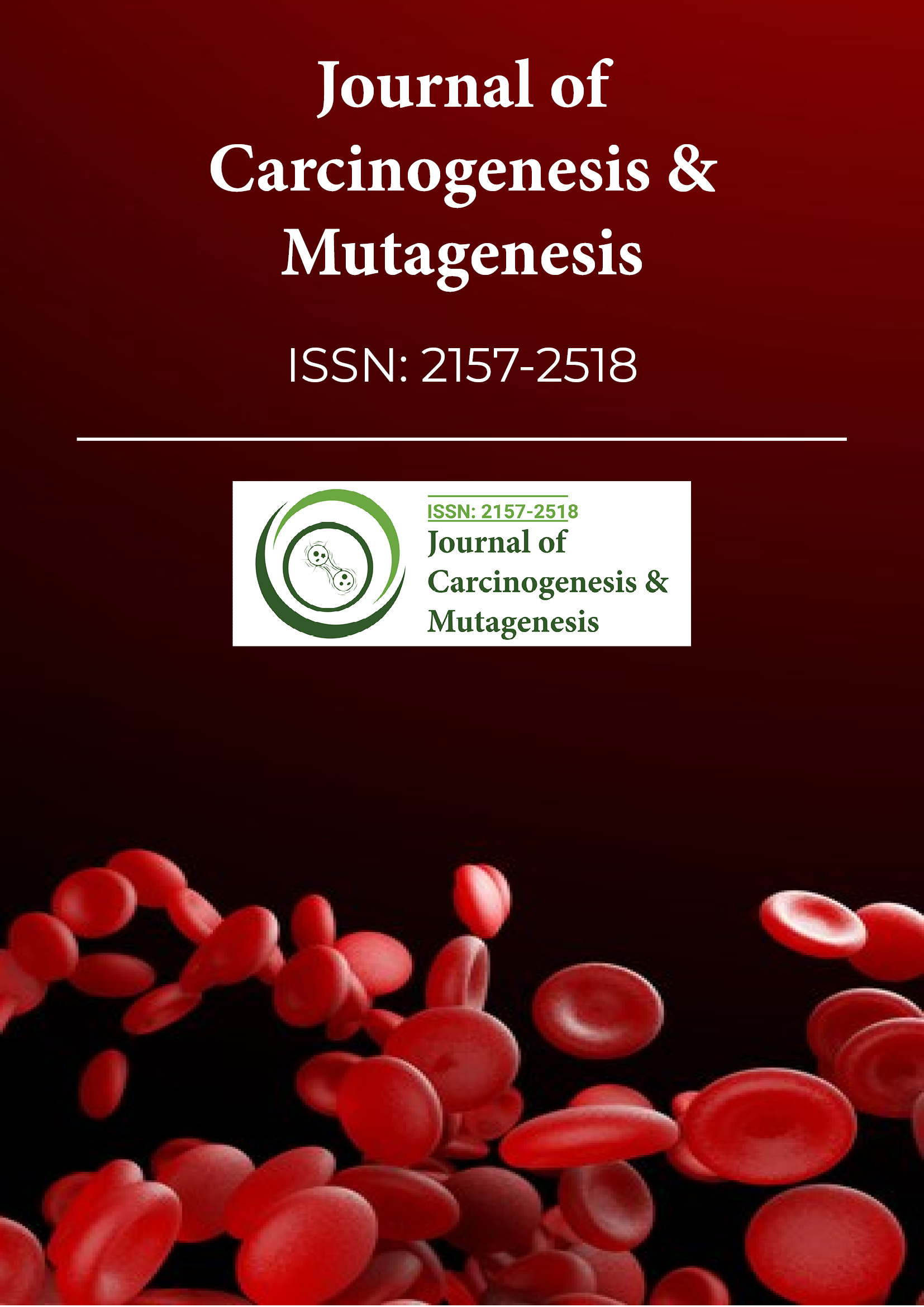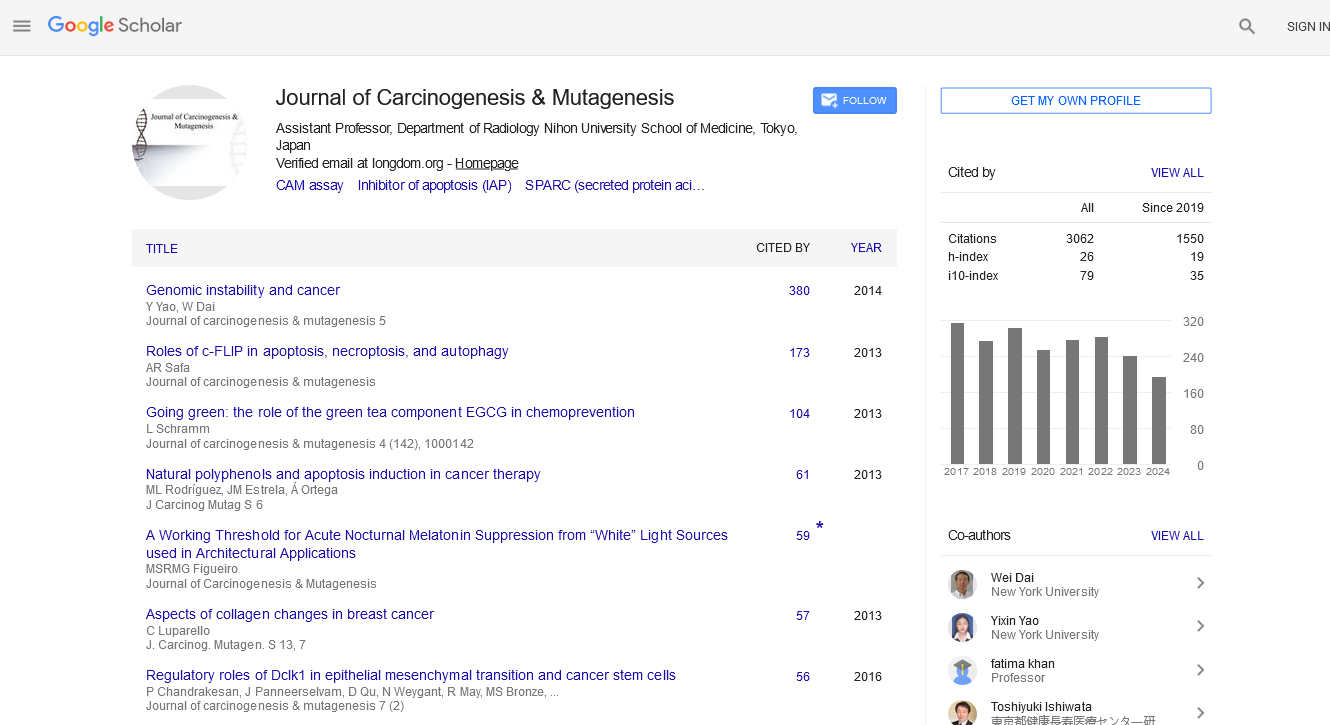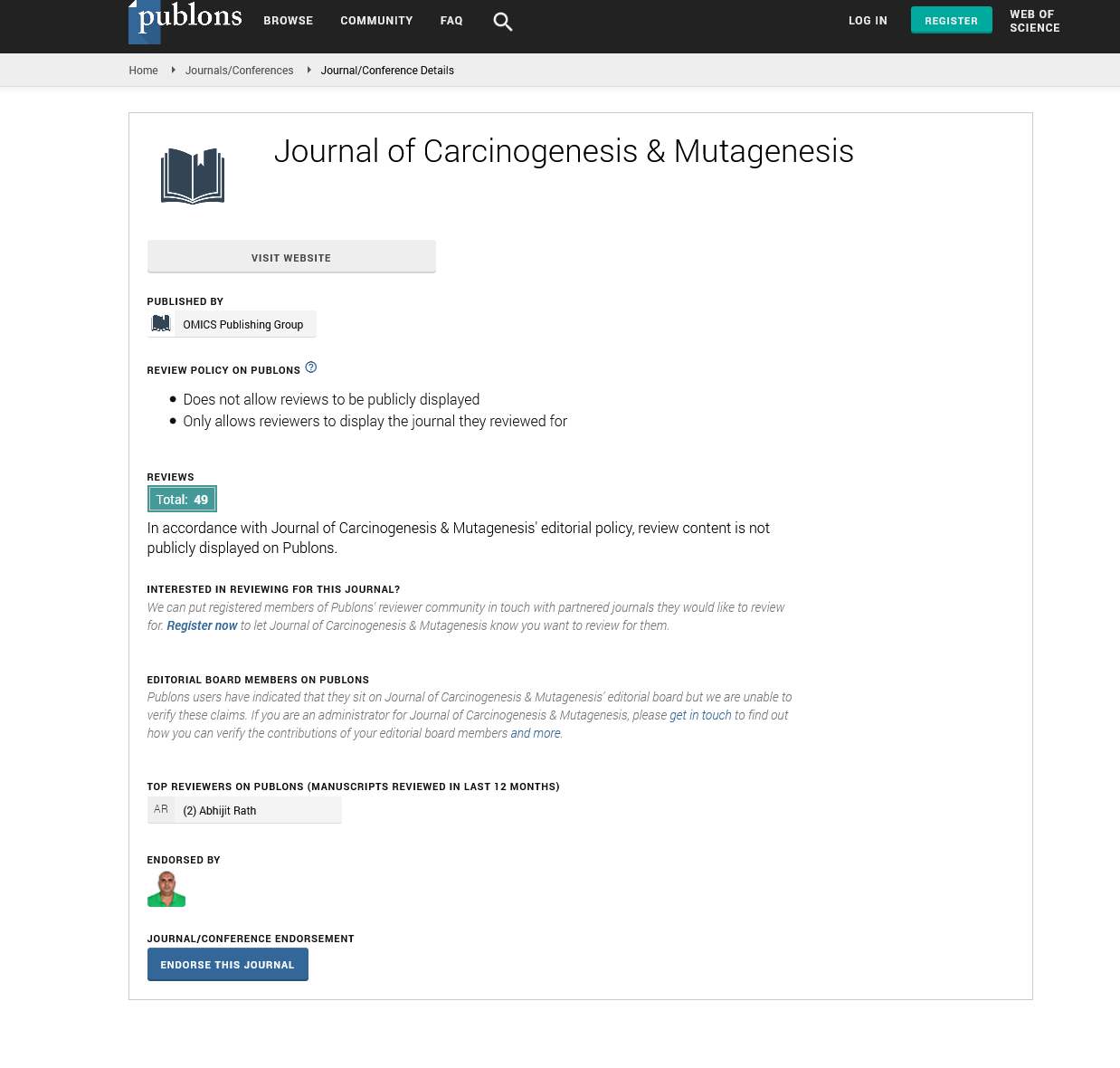Indexed In
- Open J Gate
- Genamics JournalSeek
- JournalTOCs
- Ulrich's Periodicals Directory
- RefSeek
- Hamdard University
- EBSCO A-Z
- OCLC- WorldCat
- Publons
- Geneva Foundation for Medical Education and Research
- Euro Pub
- Google Scholar
Useful Links
Share This Page
Journal Flyer

Open Access Journals
- Agri and Aquaculture
- Biochemistry
- Bioinformatics & Systems Biology
- Business & Management
- Chemistry
- Clinical Sciences
- Engineering
- Food & Nutrition
- General Science
- Genetics & Molecular Biology
- Immunology & Microbiology
- Medical Sciences
- Neuroscience & Psychology
- Nursing & Health Care
- Pharmaceutical Sciences
Opinion Article - (2025) Volume 16, Issue 1
Tumorigenesis: The Molecular Path to Cancer Development
Elena Cid*Received: 01-Jan-2025, Manuscript No. JCM-25-28587; Editor assigned: 03-Jan-2025, Pre QC No. JCM-25-28587 (PQ); Reviewed: 17-Jan-2025, QC No. JCM-25-28587; Revised: 24-Jan-2025, Manuscript No. JCM-25-28587 (R); Published: 31-Jan-2025, DOI: 10.35248/2157-2518.25.16.467
Description
Tumorigenesis is the complex, multistep biological process through which normal cells transform into malignant cancer cells. It involves a series of genetic, molecular, and cellular changes that drive uncontrolled cell growth, invasion, and metastasis. This process is influenced by genetic mutations, epigenetic alterations, and environmental factors. Understanding the mechanisms of tumorigenesis is important for developing effective cancer prevention strategies, diagnostics, and therapies.
At its core, tumorigenesis begins with genetic mutations that disrupt the normal regulatory mechanisms of cell division and apoptosis. These mutations often target two key classes of genes: oncogenes and tumor suppressor genes. Oncogenes are mutated forms of normal cellular genes (proto-oncogenes) that promote cell growth and division. When activated through mutation or overexpression, oncogenes drive excessive proliferation. Examples include KRAS, MYC, and HER2, which are frequently mutated in cancers such as colorectal, breast, and lung cancer.
In contrast, tumor suppressor genes normally regulate cell cycle checkpoints, promote DNA repair, and trigger apoptosis in damaged cells. When these genes are inactivated, the cell loses its ability to control growth, allowing for unregulated proliferation. Mutations in TP53, the most frequently altered tumor suppressor gene in human cancers, prevent damaged cells from undergoing apoptosis, promoting tumor growth. Similarly, mutations in RB1 and BRCA1/2 disrupt cell cycle regulation and DNA repair, contributing to tumorigenesis.
A hallmark of tumorigenesis is genomic instability, which results from defects in DNA repair pathways and chromosomal abnormalities. This instability leads to an accumulation of mutations, further driving the progression of cancer. For example, Microsatellite Instability (MSI), caused by defects in mismatch repair genes, is a characteristic of colorectal and endometrial cancers. Additionally, chromosomal translocations, such as the Philadelphia chromosome in Chronic Myeloid Leukemia (CML), result in the fusion of the BCR and ABL genes, creating a hyperactive tyrosine kinase that drives uncontrolled cell growth.
Epigenetic alterations also play a significant role in tumorigenesis. These changes include DNA methylation, histone modification, and non-coding RNA regulation, all of which influence gene expression without altering the DNA sequence. Hypermethylation of tumor suppressor gene promoters, such as CDKN2A and MLH1, silences their expression, promoting tumor formation. Conversely, global hypomethylation can activate oncogenes, further contributing to cancer progression.
Progression is the final stage, where malignant transformation occurs. Cancer cells acquire invasive and metastatic properties, enabling them to spread to other tissues. This stage is characterized by increased angiogenesis, immune evasion, and genomic instability.
Tumor Microenvironment (TME) plays a critical role in tumorigenesis. The TME consists of cancer cells, fibroblasts, immune cells, blood vessels, and extracellular matrix components. Cancer cells interact with their microenvironment, recruiting fibroblasts and immune cells to promote inflammation and angiogenesis. The immune evasion mechanisms employed by tumors, such as the upregulation of PD-L1 and CTLA-4, allow them to escape immune surveillance, further driving tumor progression..
In conclusion, tumorigenesis is a multifaceted process driven by genetic mutations, epigenetic changes, and interactions with the tumor microenvironment. Its study is essential for understanding cancer biology and developing more effective diagnostic tools and targeted treatments. As scientific research continues to unravel the complexities of tumorigenesis, the future of cancer care will be increasingly shaped by personalized and precision medicine approaches.
Citation: Cid E (2025) Tumorigenesis: The Molecular Path to Cancer Development. J Carcinog Mutagen. 16:467.
Copyright: ©2025 Cid E. This is an open-access article distributed under the terms of the Creative Commons Attribution License, which permits unrestricted use, distribution, and reproduction in any medium, provided the original author and source are credited.


